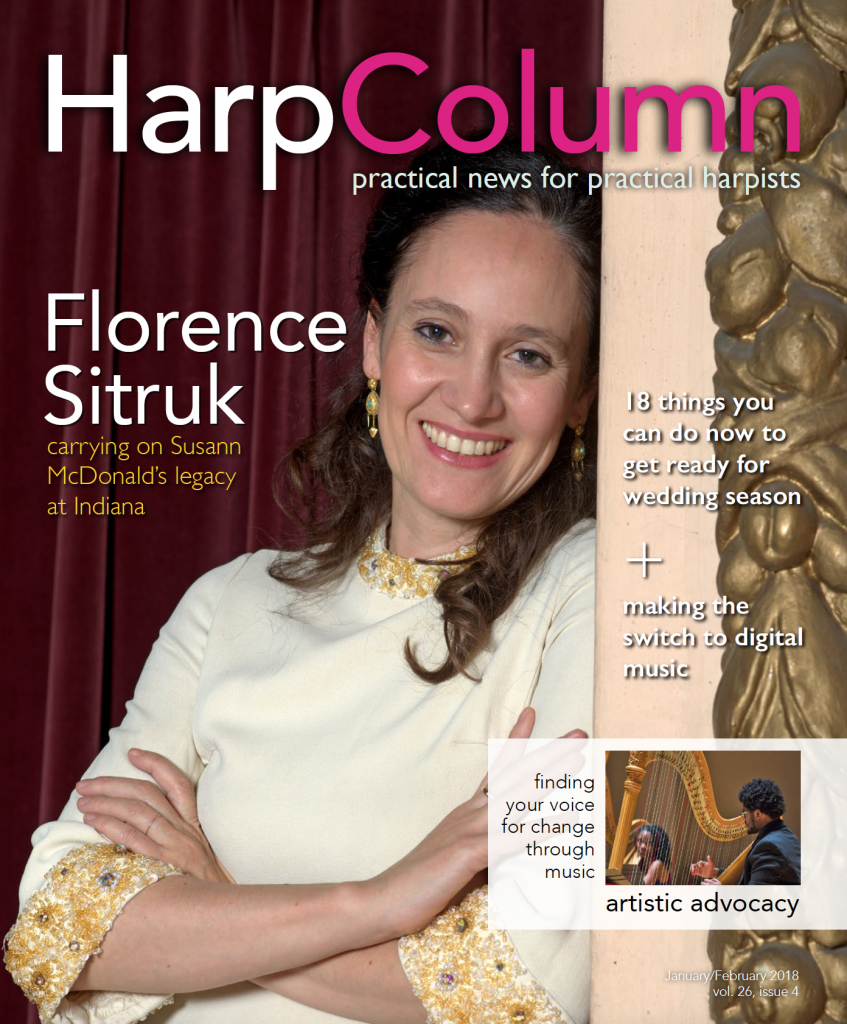Harpists are tough. You might not know it by looking at us on stage—dressed up, playing with the most sensitive, delicate touch. Our instrument towers over all but the tallest among us. Yet, we cart our harps anywhere we have to go—outdoor weddings on a mountain top or balconies only accessible only by a rickety spiral staircase. We get ourselves and our instrument to the gig, and we do it without complaint. Okay, without much complaint. Harpists carry shovels in the back of their harpmobiles during snowy months to be sure they can dig their way into a gig because they are always the first to arrive, many times via unplowed entrances. We trade our harp shoes for work boots and wrestle our 80-plus pound instruments, and gear, into and out of venues while everyone else waltzes in minutes before the downbeat. And it’s not just everyday-freelancers who exhibit this toughness; it’s harp celebrities too. Who hasn’t been encouraged to see a world-class harpist moving her own instrument? If Judy Loman can still sling that Salzedo model around the stage like it’s a lap harp, surely I have no excuse.
I learned early on that if I wanted to be successful with this instrument, learning how to move it on my own was as important as being able to play an evenly rolled chord.
It’s not just toughness. I think most harpists have an independence streak. Maybe it’s the years of being the first one in and last one out of most concerts. Maybe it’s the fact that we are playing on our own so much of the time—solo work dominates most freelancers’ schedules, and orchestra and ensemble playing is usually done on our own little island behind the string section. Or maybe it’s instilled in us early by parents and teachers who try to prepare us for what they know will be a tough road ahead that we will have to travel largely on our own. From my very first harp recital at age 10, my harp teacher insisted that my parents merely assist as I move my own harp. Now, don’t get me wrong, I still let my dad move my harp every time I could get away with it. But I learned early on that if I wanted to be successful with this instrument, learning how to move it on my own was as important as being able to play an evenly rolled chord.
So I was heartened when, in our cover interview, Florence Sitruk, the newly appointed harp professor at Indiana University, talked at length about the importance of this toughness among harpists. Sitruk didn’t use the word “toughness,” but in that refined European way of speaking, she explained how her parents made her handle her own harp from the outset. “I could never just say, ‘Oh Daddy, carry my harp,’” she recalled.
Sitruk also noted that there isn’t an Easy Street for harpists, no matter how successful you are winning competitions or auditions. “It doesn’t mean that the phone is ringing every day.” she says. “We still have to fight for our instrument, for the recognition.” Sitruk says her mentor, Susann McDonald, has done as much as anyone to improve the harp’s standing in the music world, and she is dedicated to continuing that mission.
Maybe this toughness and independence is in our DNA as harpists. Maybe it’s learned. I’m not sure. What I do know is that you see these characteristics in every harpist—from the world’s elite performers, to the 10-year-old moving her Troubadour on stage for her first concert. None of us wish we’d played the flute. •







